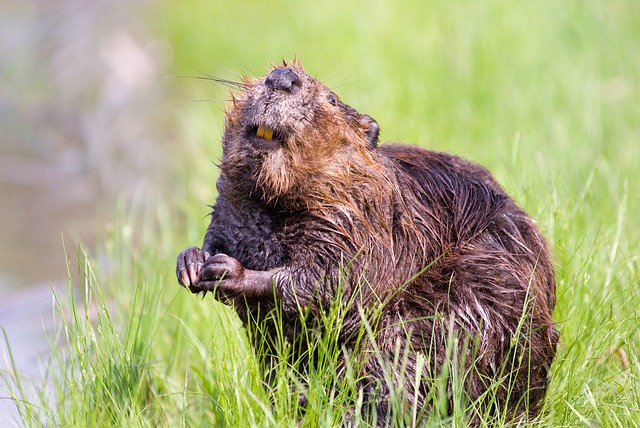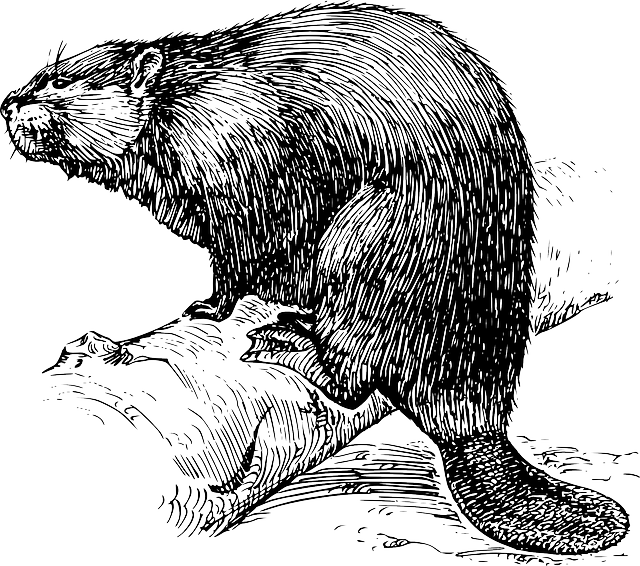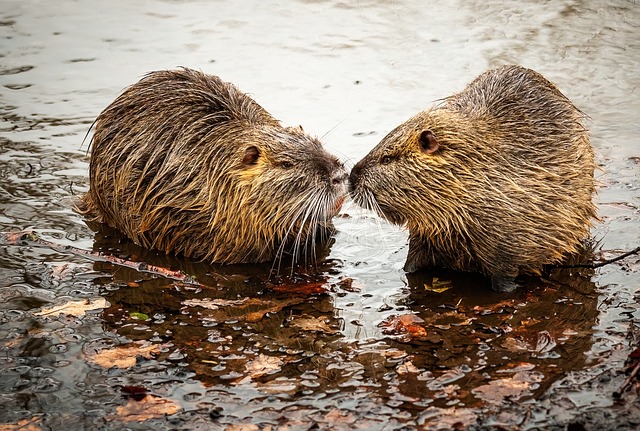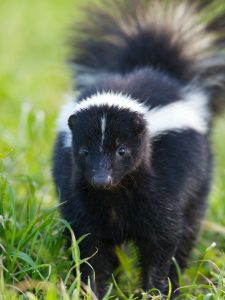How to get rid of beavers
Beaver facts
In the United States, beavers are considered a nuisance wildlife species. A beaver’s dam can flood roads, damage crops, and even undermine buildings. In some cases, beavers have been known to gnaw through trees, powerlines, and even concrete foundations.
While beavers do provide some benefits to the environment – such as improving water quality and creating habitats for other animals – their destructive behavior often outweighs these positives. As a result, many state and federal agencies have programs in place to control beaver populations.
If you think you may have a beaver problem on your property, the best course of action is to contact your local wildlife agency or a licensed wildlife removal specialist. These professionals can safely and effectively remove the beavers from your property without causing any harm to the animals.
For more information about how to get rid of beavers, we have compiled this blog post for you!

Beaver characteristics
There are a few characteristics that help you identify beavers right away! The weight of a beaver ranges from 35 to 60 pounds. They are between 25 and 31 inches in size. The heads, ears, and eyes of these animals are large. Their hind feet are webbed, their fur is waterproof, and their tail is paddle-shaped. They have a large and very prominent set of front teeth that are quite yellow. Depending on their fur color, they can range from blonde to tan to jet black.
Identify whether or not you have a beaver problem.
Beavers are large, semiaquatic rodents with remarkable engineering abilities. They build dams and lodges out of sticks and mud, which can create problems for humans if they are located near roads, houses, or other infrastructure. Beavers also fell trees and eat the bark, which can damage ecosystems.
Signs for beaver activity
If you think you have a beaver problem, there are some things you should look for. Dammed-up waterways, gnawed trees, and stick lodges are all signs that beavers are present. You may also see beaver tracks in the mud or snow. If you do have a beaver problem, the best course of action is to contact a wildlife control expert who can safely remove the beavers from your property.
Determine the severity of the beaver damage
Beaver damage can vary in severity depending on the size of the beaver and the type of tree. A small beaver may only take a few bites out of a tree, while a large beaver can cause extensive damage. The type of tree also makes a difference. For example, a beaver will gnaw on a hardwood tree, such as an oak, more than it will on a softwood tree, such as a pine. This is because hardwoods have a tougher bark that is more difficult to penetrate. Additionally, beavers often prefer to eat the inner bark of trees, which is softer and easier to chew. As a result, the type and size of the tree impact the severity of the beaver damage. To prevent beavers from easily reaching your trees, some people have had success with the installation of wire mesh fences, but this is not always the case and poses dangers in itself for other animals getting trapped and injured in it.
Look for beaver dams and lodges.
Though they are often thought of as pests, beavers are among the animals that play an important role in the ecosystem. Almost any freshwater environment can be utilized by them. As they build dams and lodges, they create wetland habitats that are perfect for a wide variety of plants and animals. These habitats can also help to filter water and prevent flooding. As a result, beaver dams and lodges can positively impact the environment and the local community. Keep an eye out for beaver dams and lodges. These structures can provide homes for animals like otters and birds and offer protection from the elements. In addition, spotting a beaver dam can be a fun way to get children interested in nature. So next time you’re out exploring, keep a look out for these impressive engineering feats.
How do I get rid of beavers?
Contact a professional to help get rid of the beavers.
Beavers are one of the most tenacious and prolific rodents in North America. Capable of felling trees and damming streams, these hardy creatures have caused headaches for homeowners and land managers for centuries. If you find yourself amidst a beaver problem, your best course of action is to contact a professional wildlife removal company. Their employees are experienced in beaver trapping and beaver removal and will work to quickly and safely remove the beavers from your property. We highly discourage the usage of electric fences and think you should opt for a non lethal trap.
In some cases, it may also be possible to modify the landscape to make it less attractive to beavers. For instance, installing fencing around ponds or planting shrubs can help deter beavers from taking up residence on your land. By working with a professional, you can take steps to resolve your beaver problem in a way that is safe and effective.
Monitor the area after the beavers have been removed
Beavers are known for their ability to dam up rivers and create ponds. While this can provide a home for other wildlife, it can also cause problems for humans. Flooding is a common issue in areas where beavers are present, and the animals can also damage property by felling trees. As a result, many landowners choose to remove resident beavers from their property. However, monitoring the area after all the beavers have been removed is important.
The beavers’ dams can help prevent soil erosion, and the ponds can provide habitat for other wildlife. If the beavers are not replaced, these benefits will be lost. In addition, the sudden removal of beavers and a beaver dam can cause problems for the local ecosystem. By monitoring the area after they are gone, landowners can help to mitigate any negative impacts of removing beaver populations from their property.
Beaver-proofing your property
If you think you might have a beaver problem, it’s important to take action quickly. By following the tips in this blog post, you’ll be able to determine the severity of the problem and find the best solution for your situation. Don’t hesitate to contact a professional if you need help getting rid of the beavers – they can provide expert advice and assistance to ensure that animal removal is done humanely and properly.
Finally, it’s important to monitor the area even after the beavers are gone to make sure they don’t come back. You can achieve this by removing all possible sources of their food and construction materials for a beaver dam from your property. This prevents them from finding the necessary building materials to rebuild dams. They will then look for a new suitable habitat to live in. Taking these steps can protect your property from further damage and prevent beaver problems in the future.







